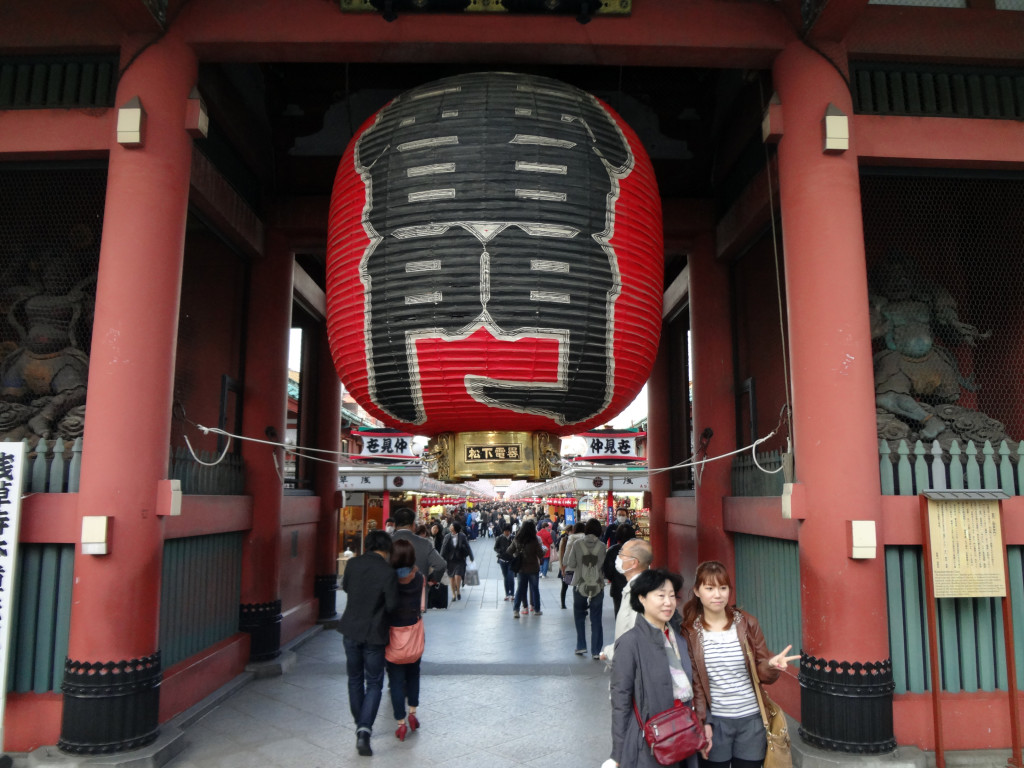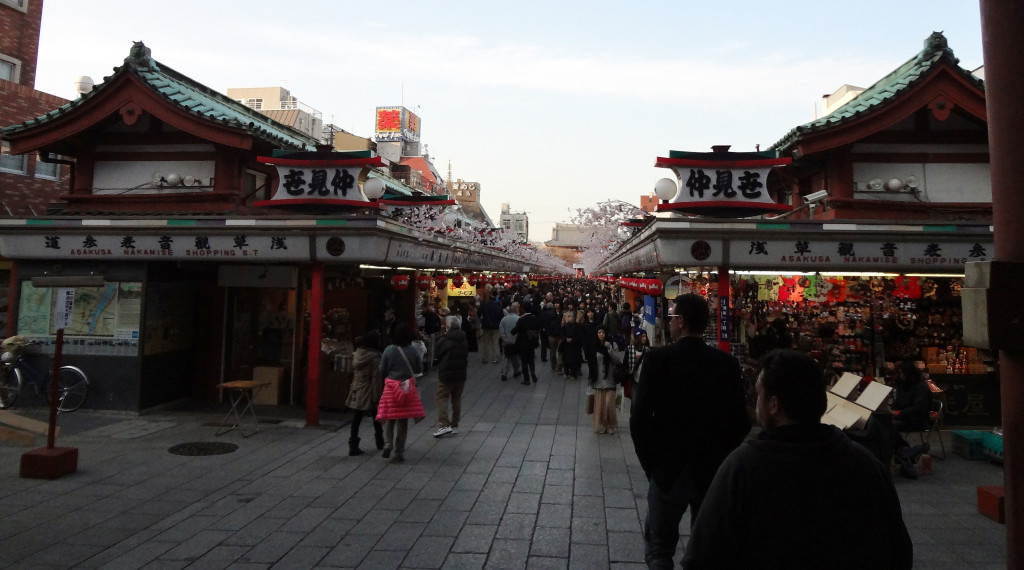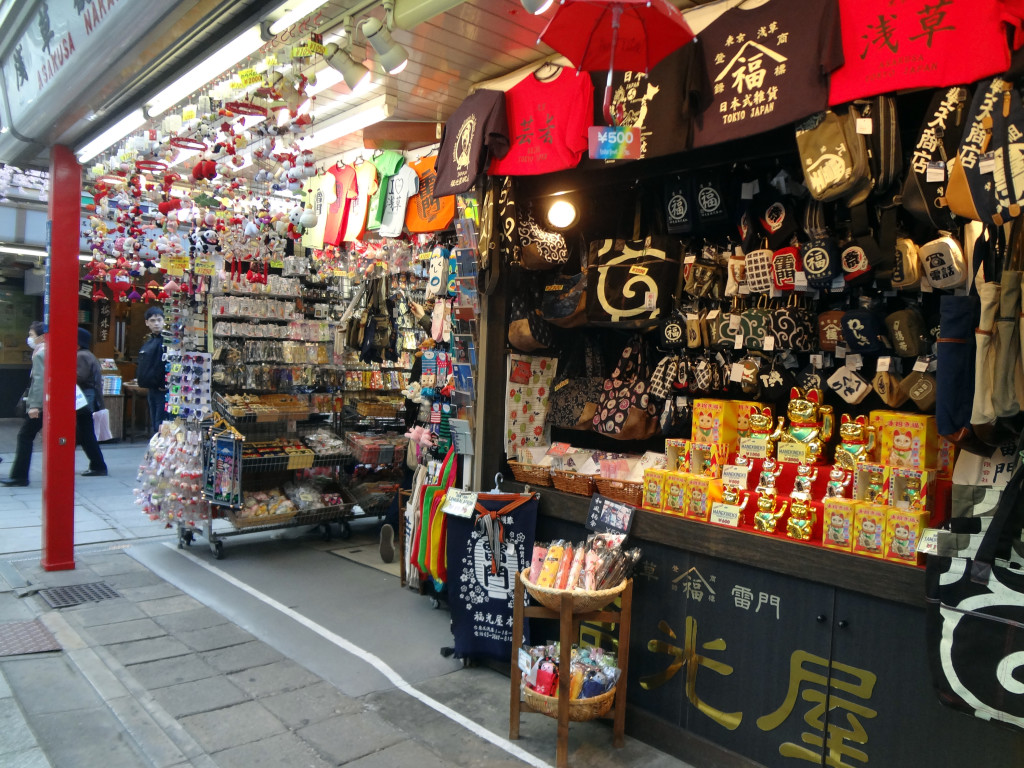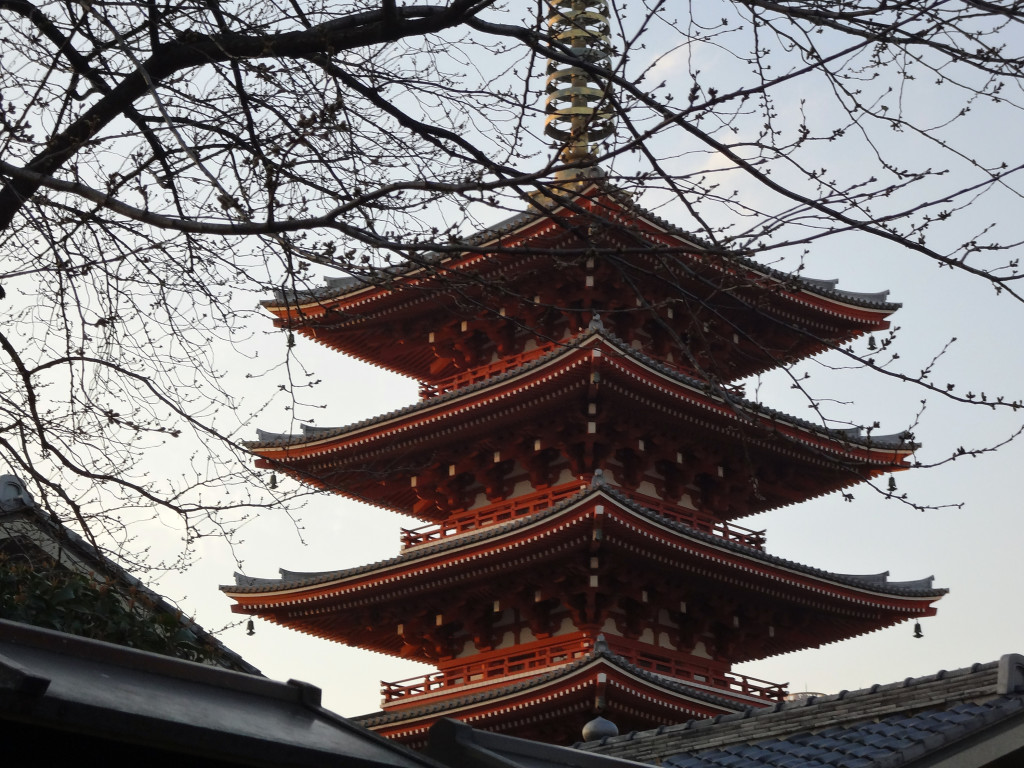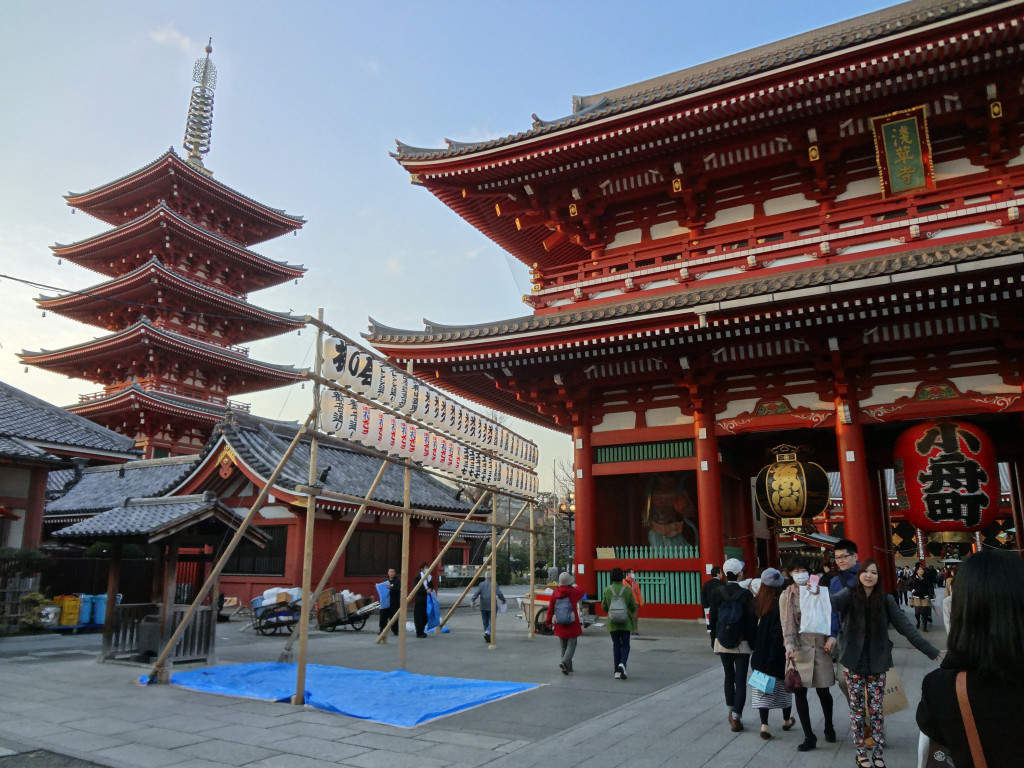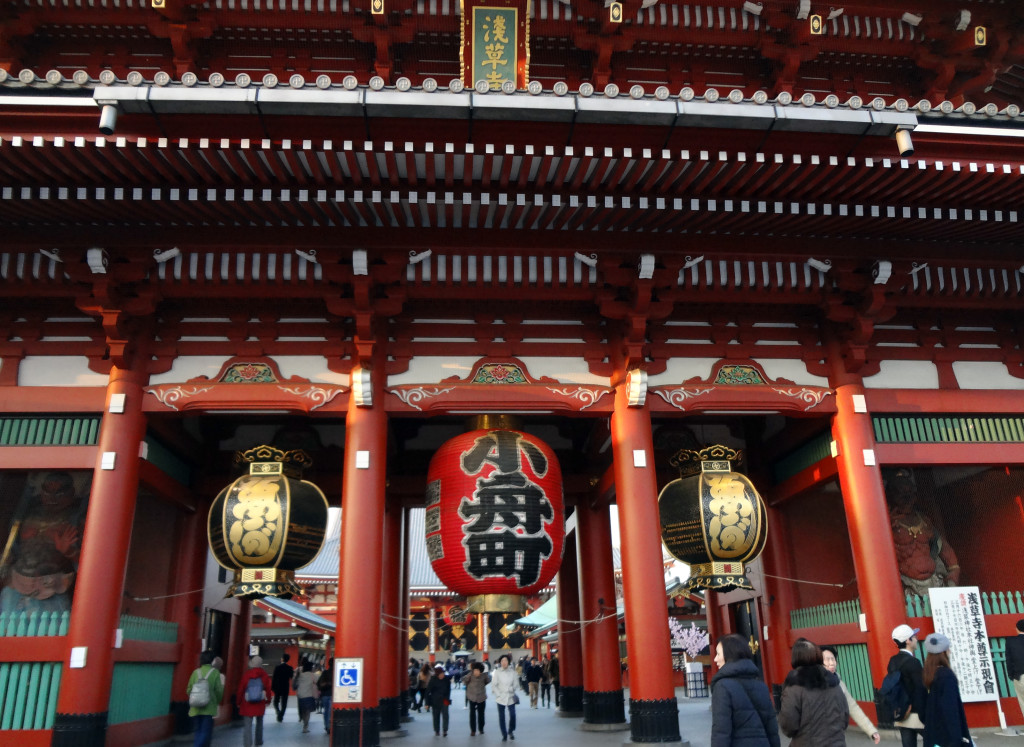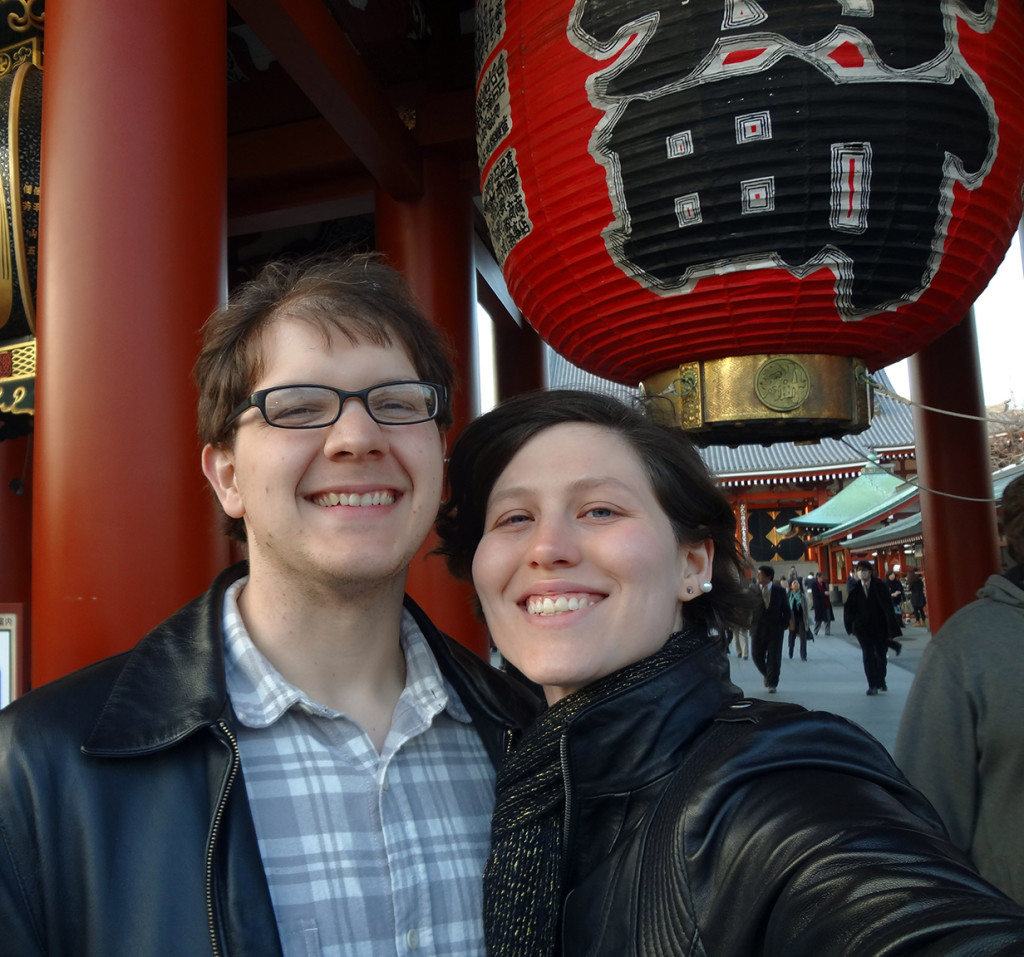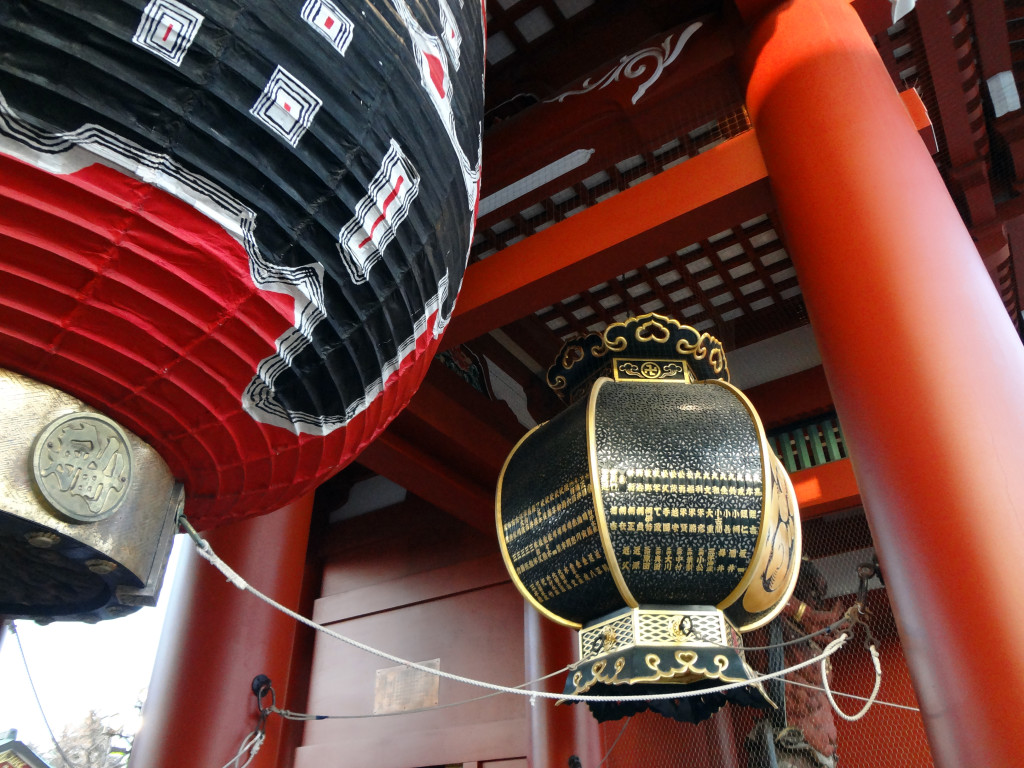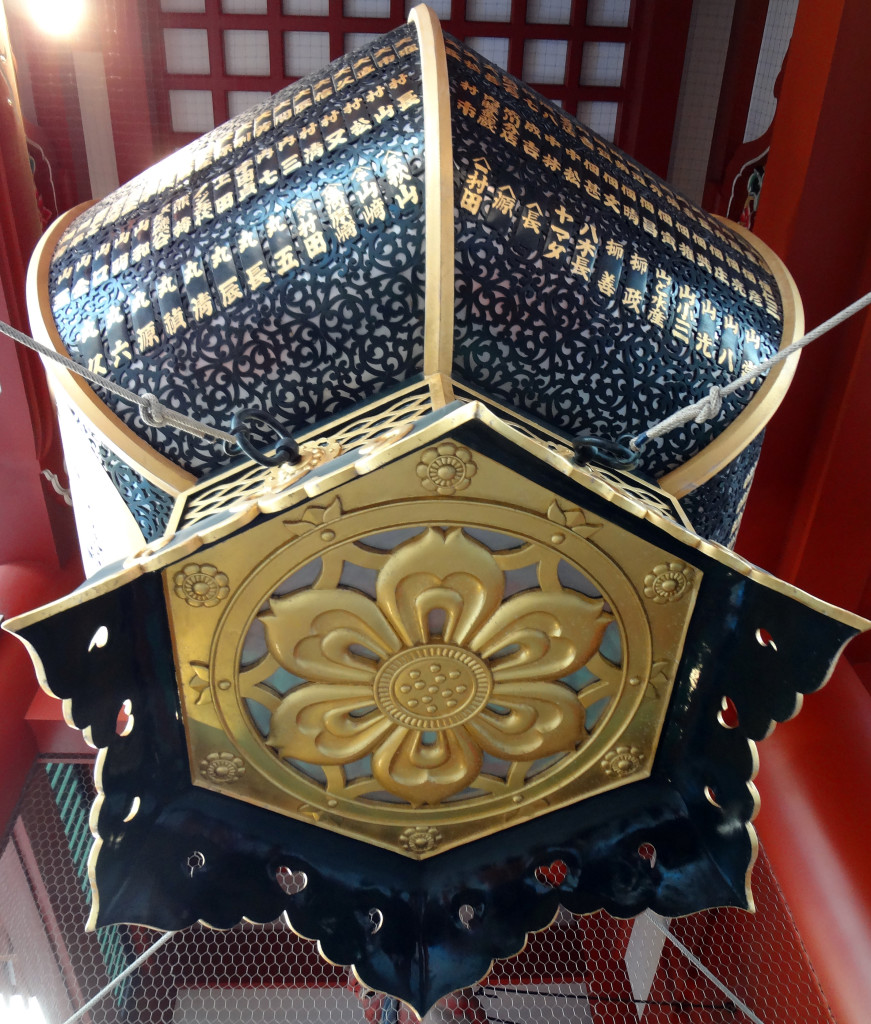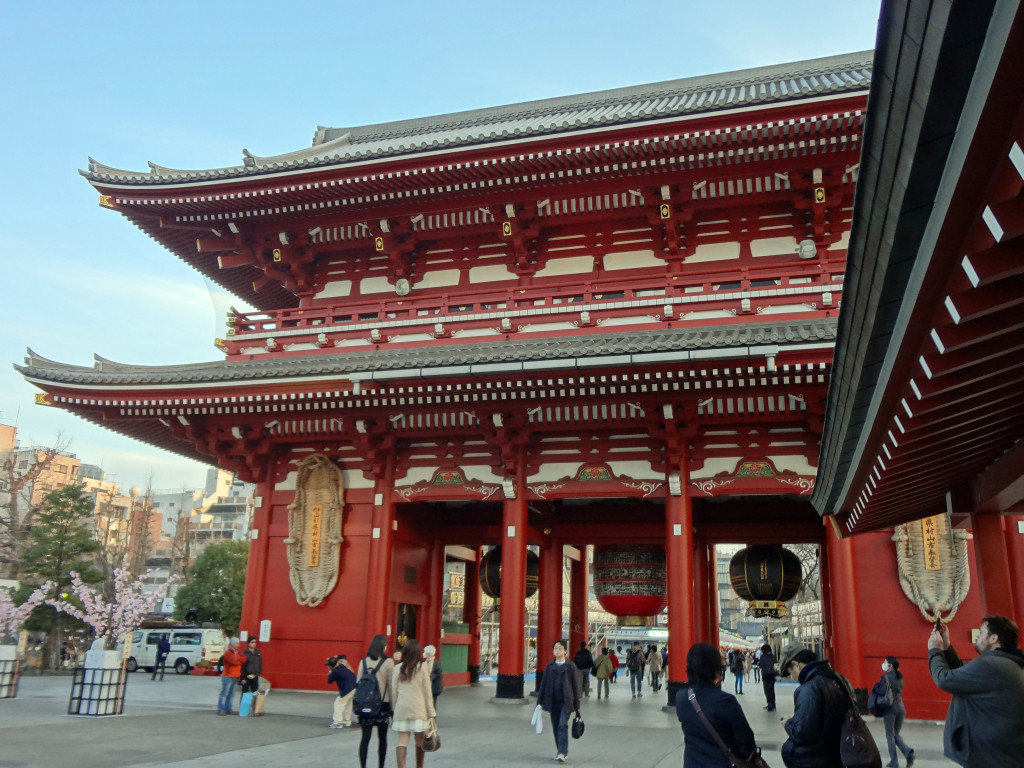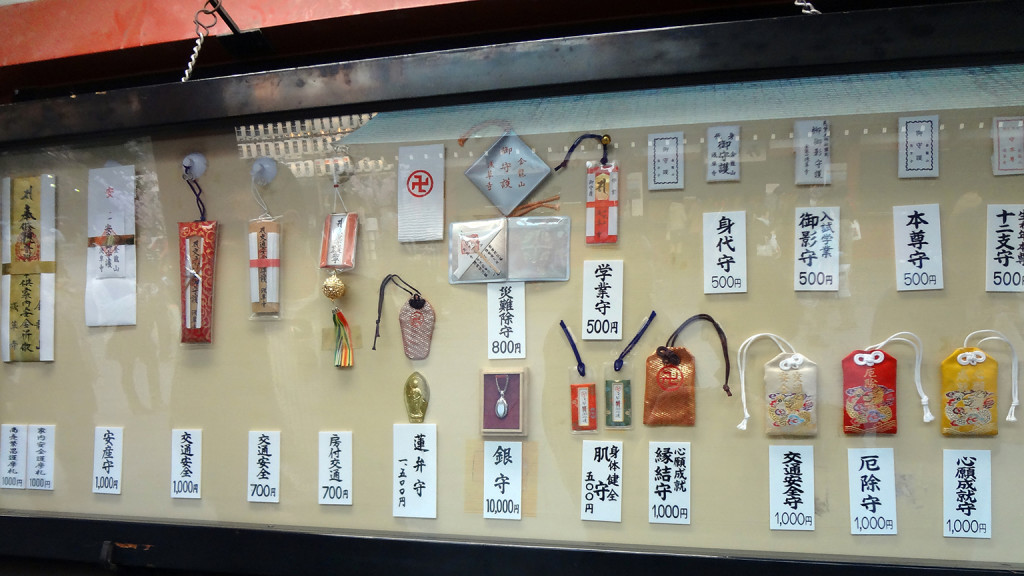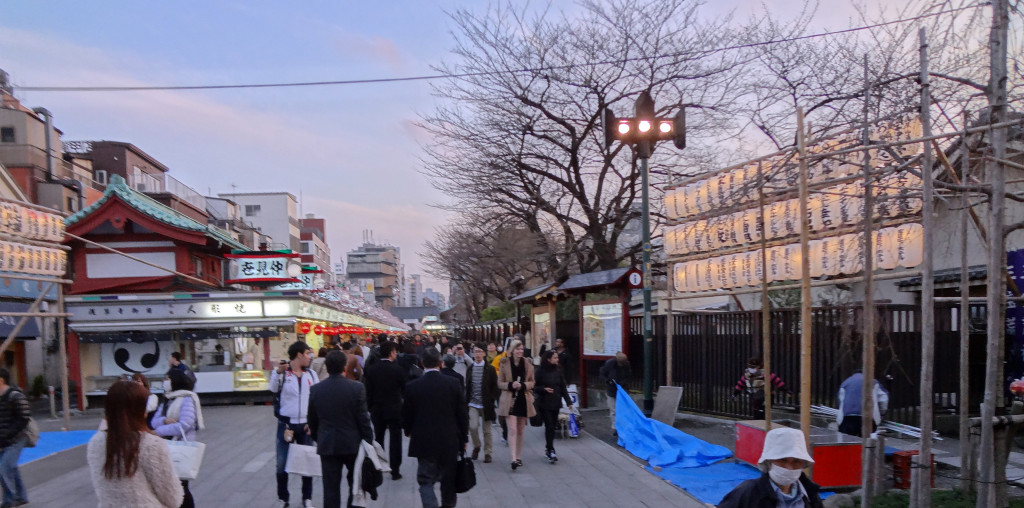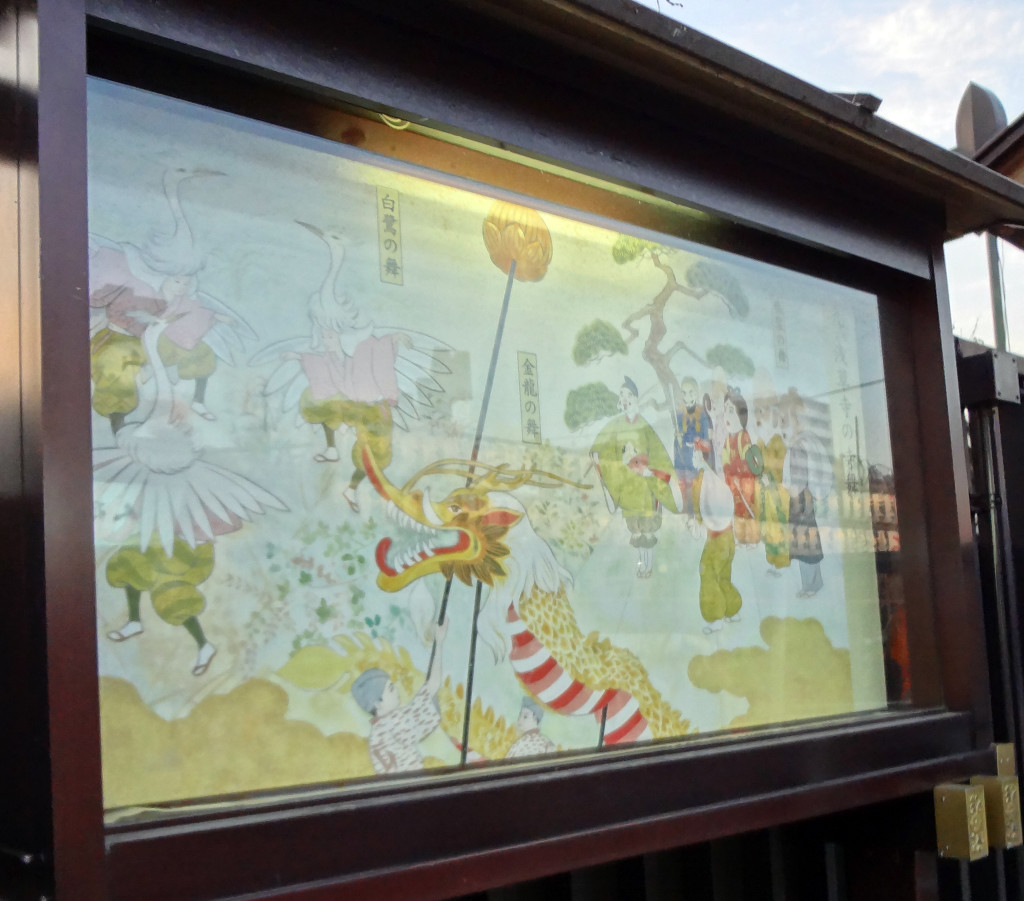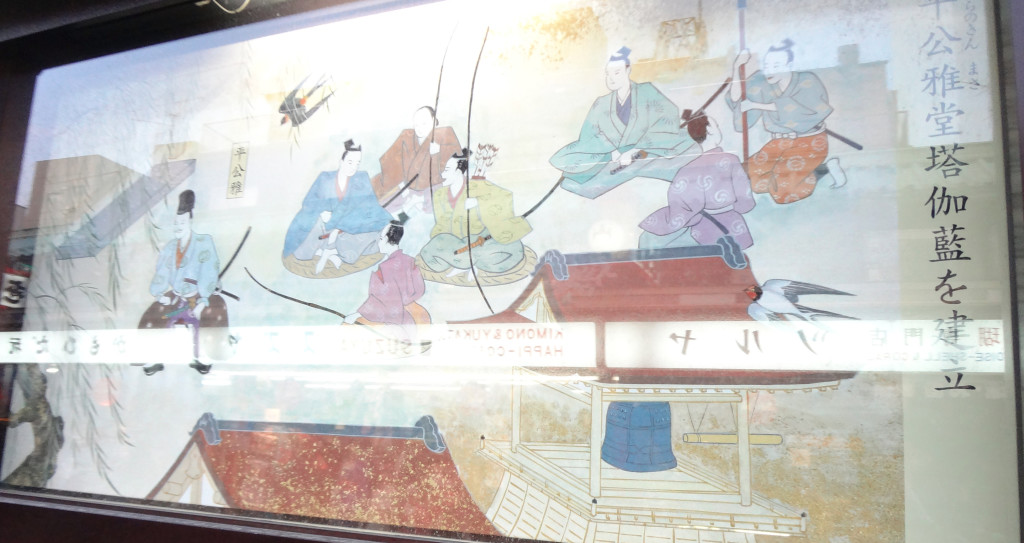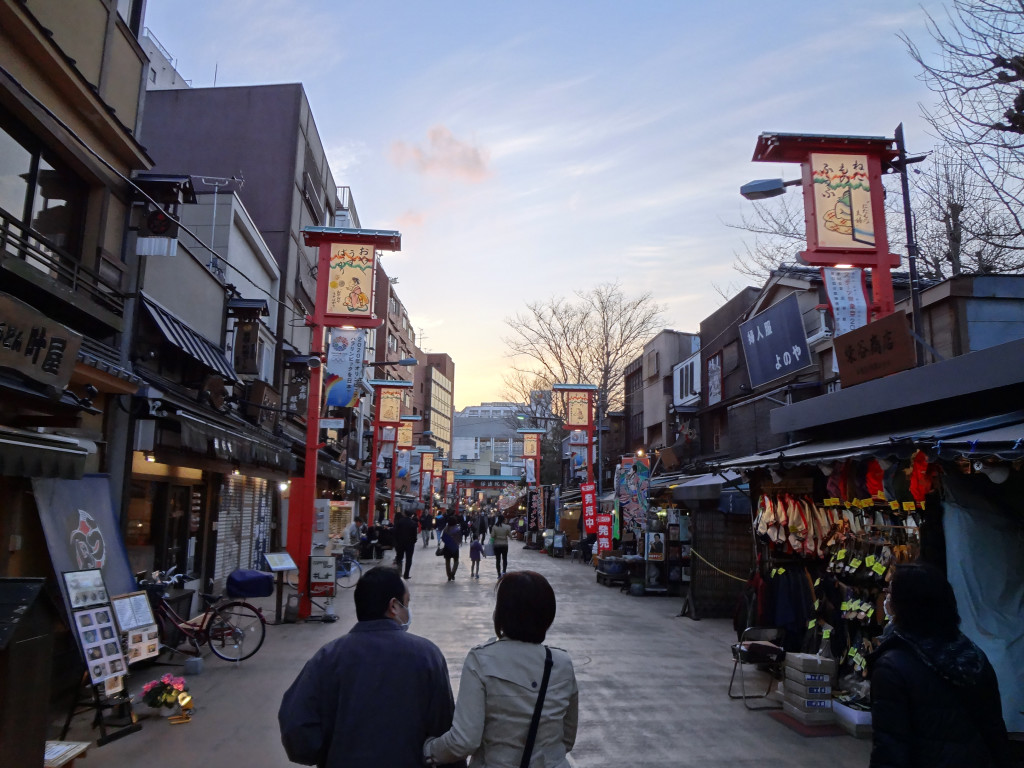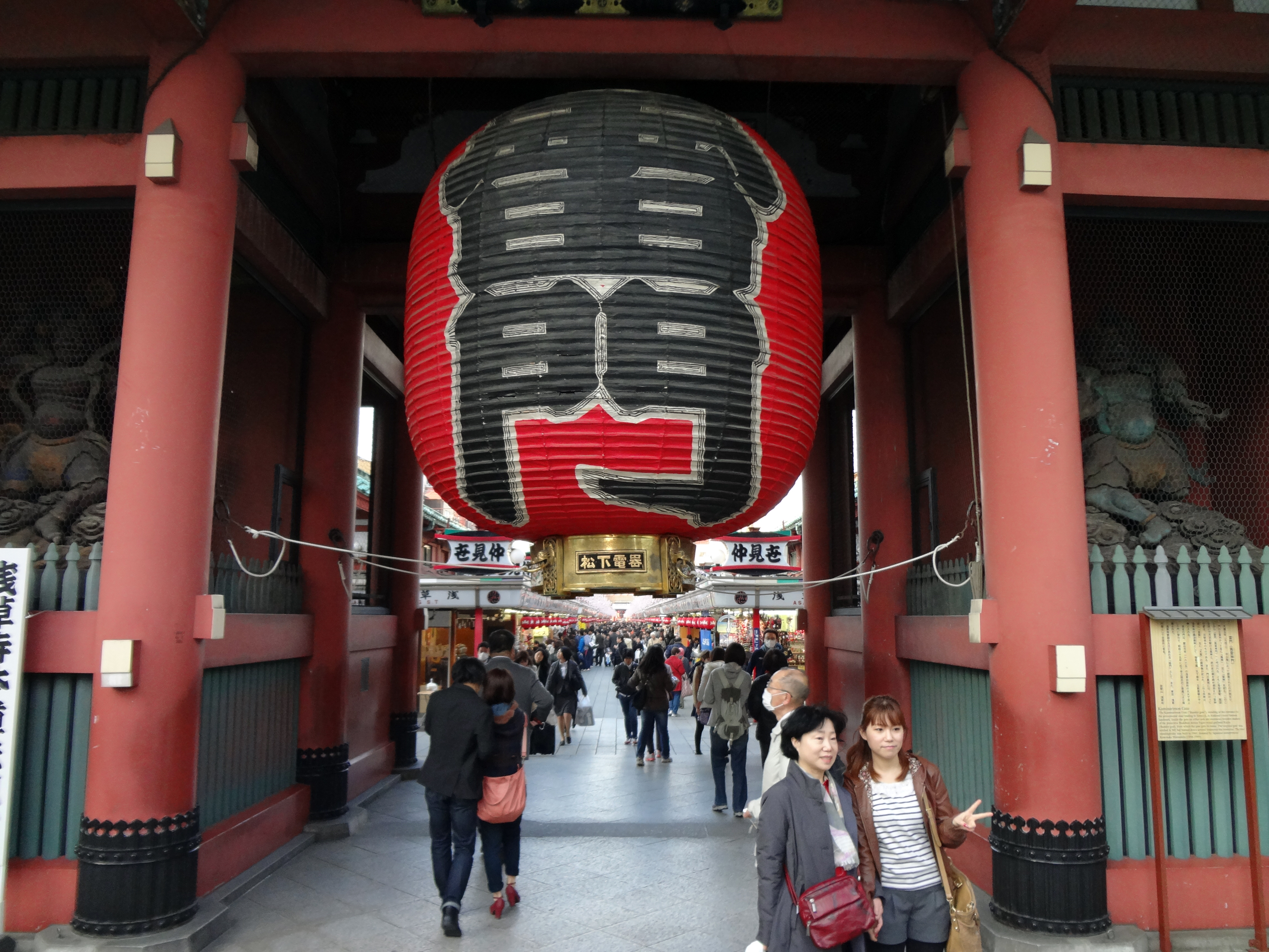
Visiting temples and shrines in Japan is a great thing to do, not just for the cultural and historical significance of these sites, but also because aside from the cost of train fare, they are free. Adam and I skipped over to visit the Sensoji Temple, a Buddhist temple that is Tokyo’s oldest (built in 645).
After a short walk from the train, we arrived at and passed through the Kaminarimon, or Thunder Gate, which houses four statues and one very large lantern. Between that and the inner ground is the Nakamise-Dori, a street lined with vendor stalls. This line of shops has been around for several centuries. It is now considered very kitschy and the place for tourists to go and pick up souvenirs and gifts. Which we did!
The next gate is Hozomon, the Treasure Gate. First built in 942, it is two stories and houses national and cultural treasures. Outside, it features three large lanterns, two statues of Nio, the guardian deity of Buddha, and two very large waraji – straw sandals.
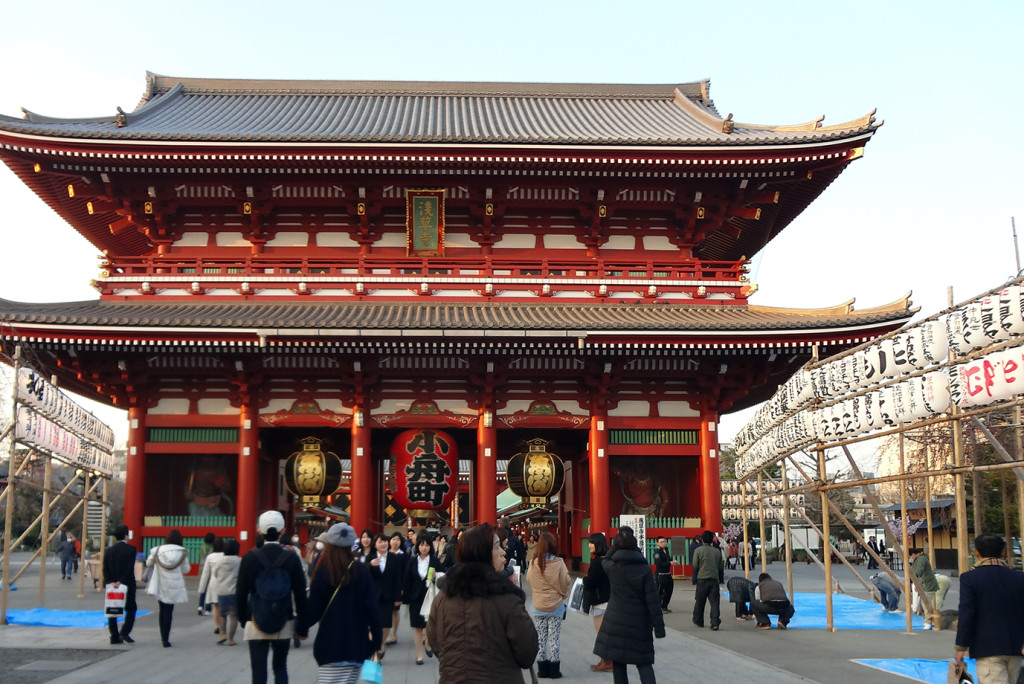
The two-story inner gate, known at the Teasure-House Gate, built in 942, and rebuilt in 1636 and 1964.
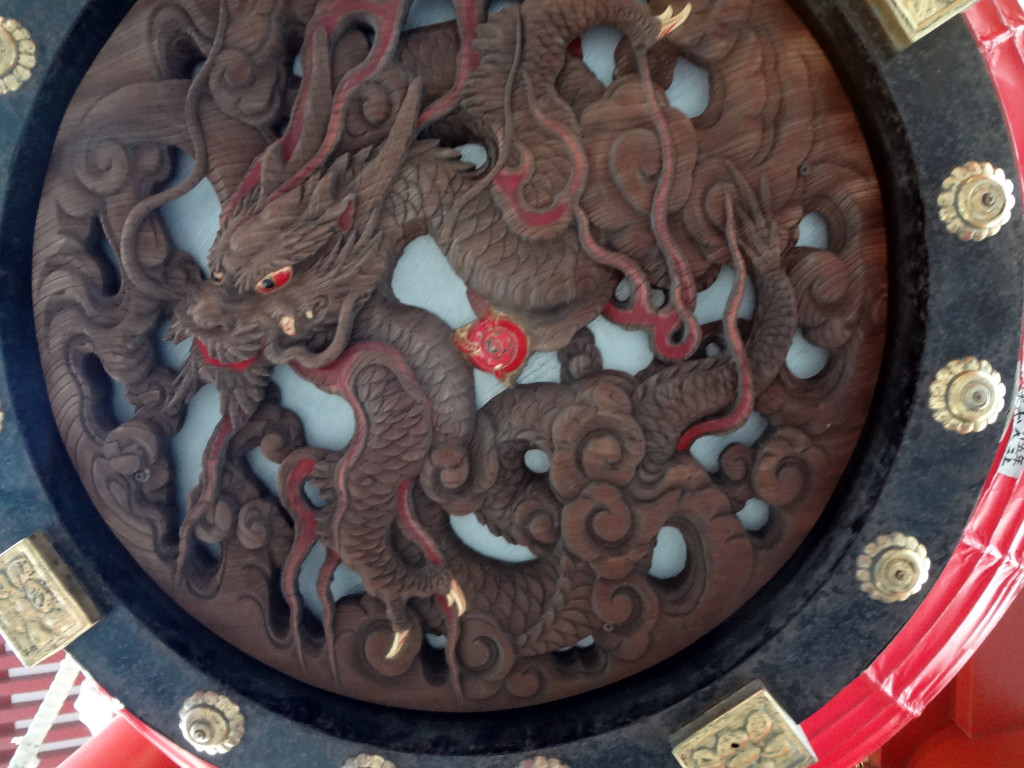
The underside of the red chōchin commemorating the 400th anniversary of the start of the Edo period.
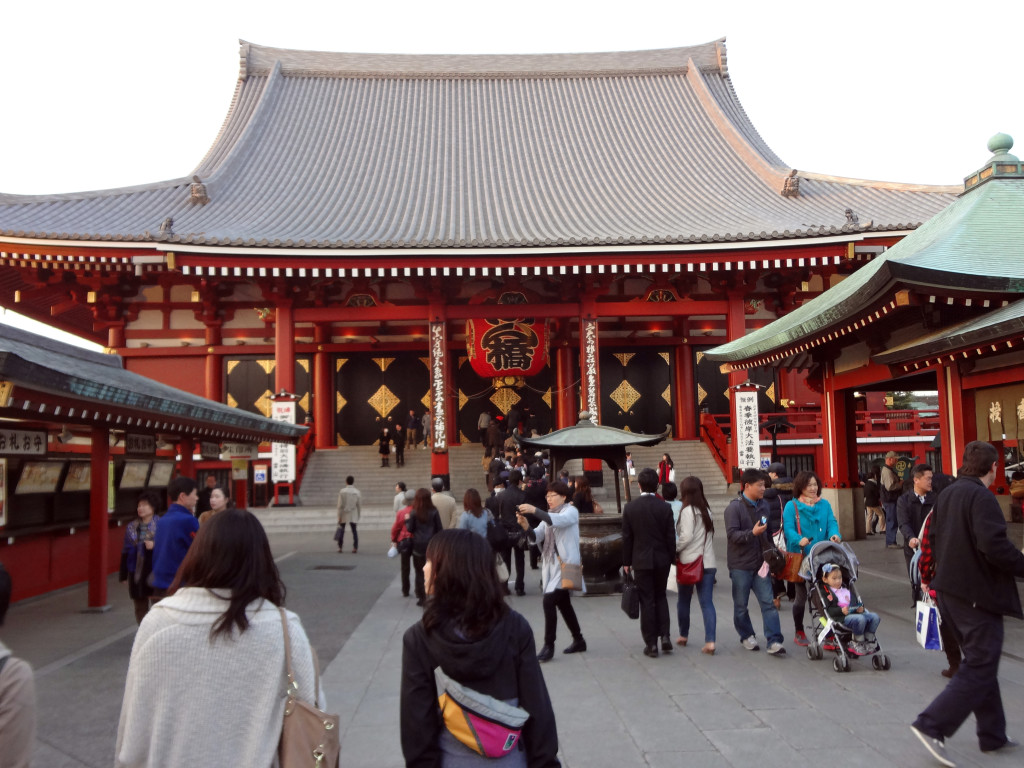
The inner building. There are gardens, fountains, and other loveliness behind, but as it was not a holiday, this was all closed.
At the shrine, we waited to pay our respects in the traditional manner, which is to toss money in a receptacle, clap your hands together, then place them together in the gassho position (like praying for Christians) and bow your head for a bit. Having done that, we hung out for a bit and headed back to our side of town, souvenirs in tow. It would be very interesting to visit Sensoji during one of the Shinto festivals, Sanja Matsuri – Tokyo’s largest. It lasts for 3-4 days, and is very popular.
We had a good, low-key time at Sensoji Temple, walking around the stalls, buying souvenirs, checking out the temple, and generally soaking in the culture. Unfortunately for me, I did not know that there is a pretty neat-looking Shinto shrine on the temple grounds. Had I known, we would totally have visited it as well. I will have to add that to the rapidly growing list of reasons to go back to Japan as soon as possible!
emily
Nerd. Foodie. Gamer. Homecook. Perpetual planner. Gardener. Aspiring homesteader. Direct response graphic designer. I use too many damn commas.
